Disclosure: Meeple Mountain received a free copy of this product in exchange for an honest, unbiased review. This review is not intended to be an endorsement.
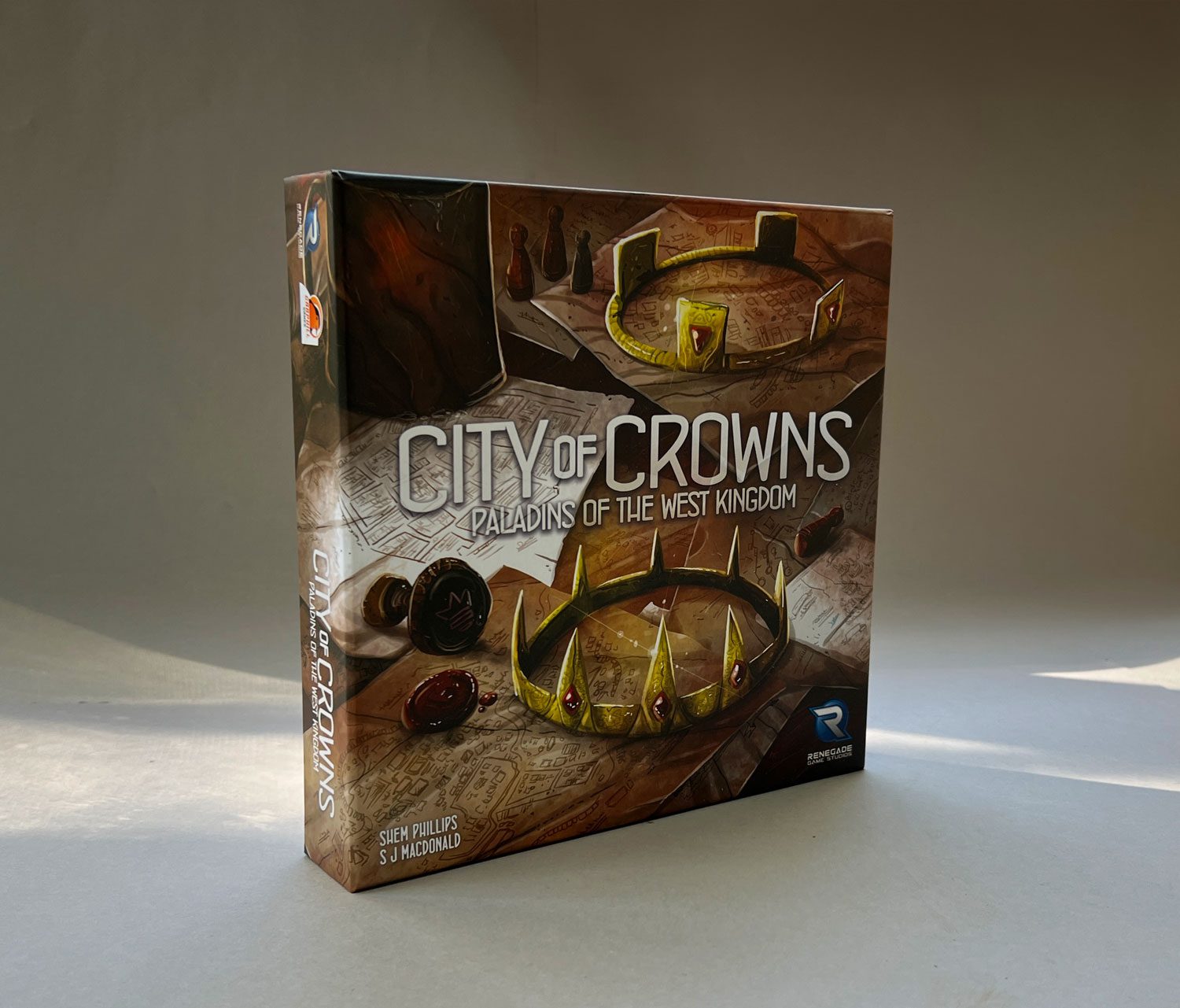
Shem Phillips is a remarkable game designer. Since 2014, he has published 17 games, not to mention the many expansions for some of those games. That the majority of these are well-respected, challenging games makes his output even more impressive.
One of his best games is Paladins of the West Kingdom, a 2019 title my friend and colleague David McMillan reviewed here on Meeple Mountain. To sum up his feelings about the game, I’ll quote from the review where he relates his first time playing:
“Paladins was, hands down, one of the best games I’d ever played and, with several hundred reviews under my belt at that time, that was saying a lot.”
David’s review was the main reason I bought Paladins of the West Kingdom (which I’ll refer to as Paladins in this review) a few years ago—and I’m glad I did. After only two plays, Paladins landed in my personal Top 10 Games. It’s filled with crunchy decisions and actions that build on each other. As well, there’s the constant need to move your three attributes up the scoring tracks, not only for points, but to unlock better actions on the board.
When I had the chance to review the expansion, Paladins of the West Kingdom: City of Crowns (known simply as City of Crowns from here on out) I was eager to do so. I mean, more Paladins must be better, right?
For this review, I’m going to assume you’re already familiar with Paladins, so I won’t be discussing the setup or rules here. If not, please read David’s review, linked above.
What’s New
As I expected, City of Crowns starts off by giving you more Paladin, Townsfolk, Outsider, King’s Order and King’s Favor cards. These new cards all interact with the larger elements of the expansion. Some will offer additional new resources, others will score you points.
With the addition of four more Paladin cards, you’ll start each turn with four Paladins, instead of three. Then, as usual, you’ll choose one to play, one to place at the bottom of the deck, one to go on the top of the deck. Then, in a change, you’ll remove one Paladin from the game.
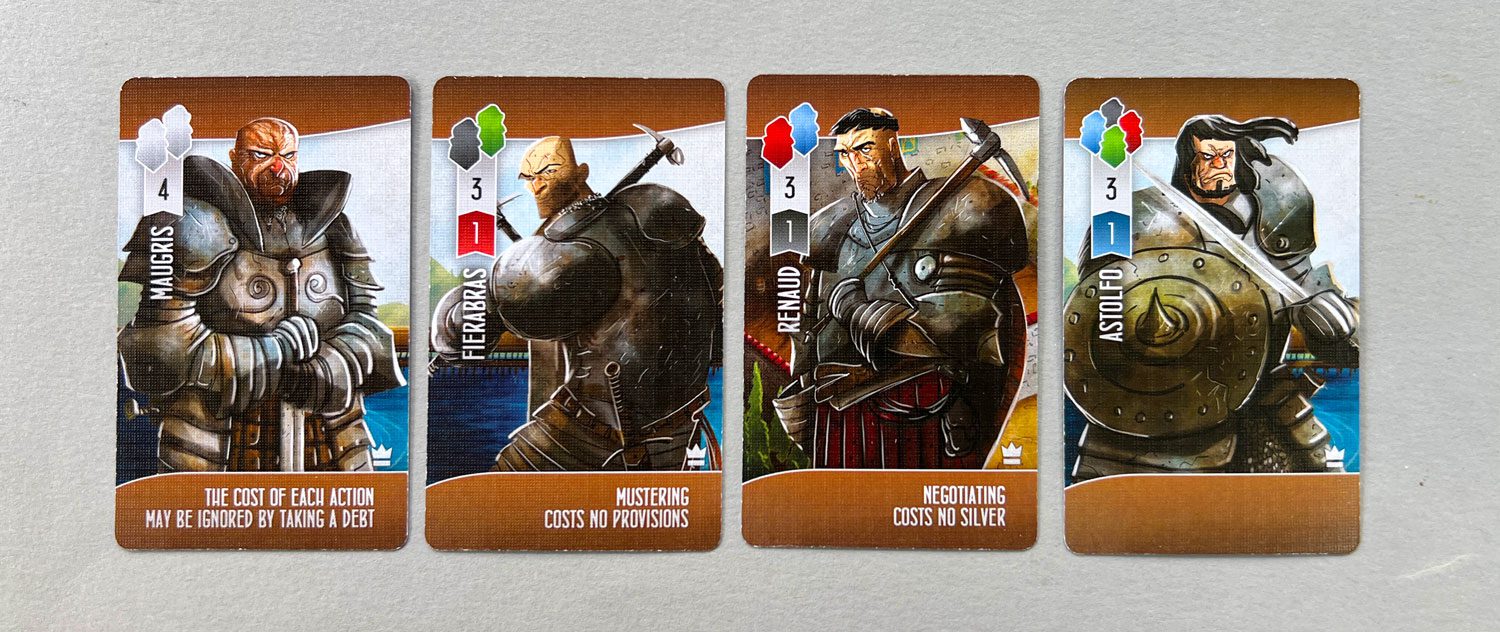
The three new kinds of cards lead us into the big additions to Paladins this expansion brings to the table. The first are the Muster cards, which sit across a new addition to the left side of the main board. You will fill in the four spaces for cards with an equal distribution of the four levels of Muster cards. You’ll then place the new Diplomat meeple on top of the right-most deck of Muster cards.

As a new action, you can either Muster and move the Diplomat to another deck of Muster cards—paying one Provision for each deck you cross over. Providing the number on the Muster Card’s Attribute matches or is less than the same Attribute on your scoring track, you can claim that card. You’ll also collect the action or resources listed at the bottom of the card.
Or, as a separate Action, you can place the properly colored meeple on its space to the left of a Muster card to take the resource shown. Whenever someone takes the Muster action to claim that card, they’ll gain both the bottom action/resource shown and the meeple on the card.
There’s also a newly added section to the right of your player board. The top of this section is for all your claimed Muster cards. Every two Muster cards will count as one point during final scoring.
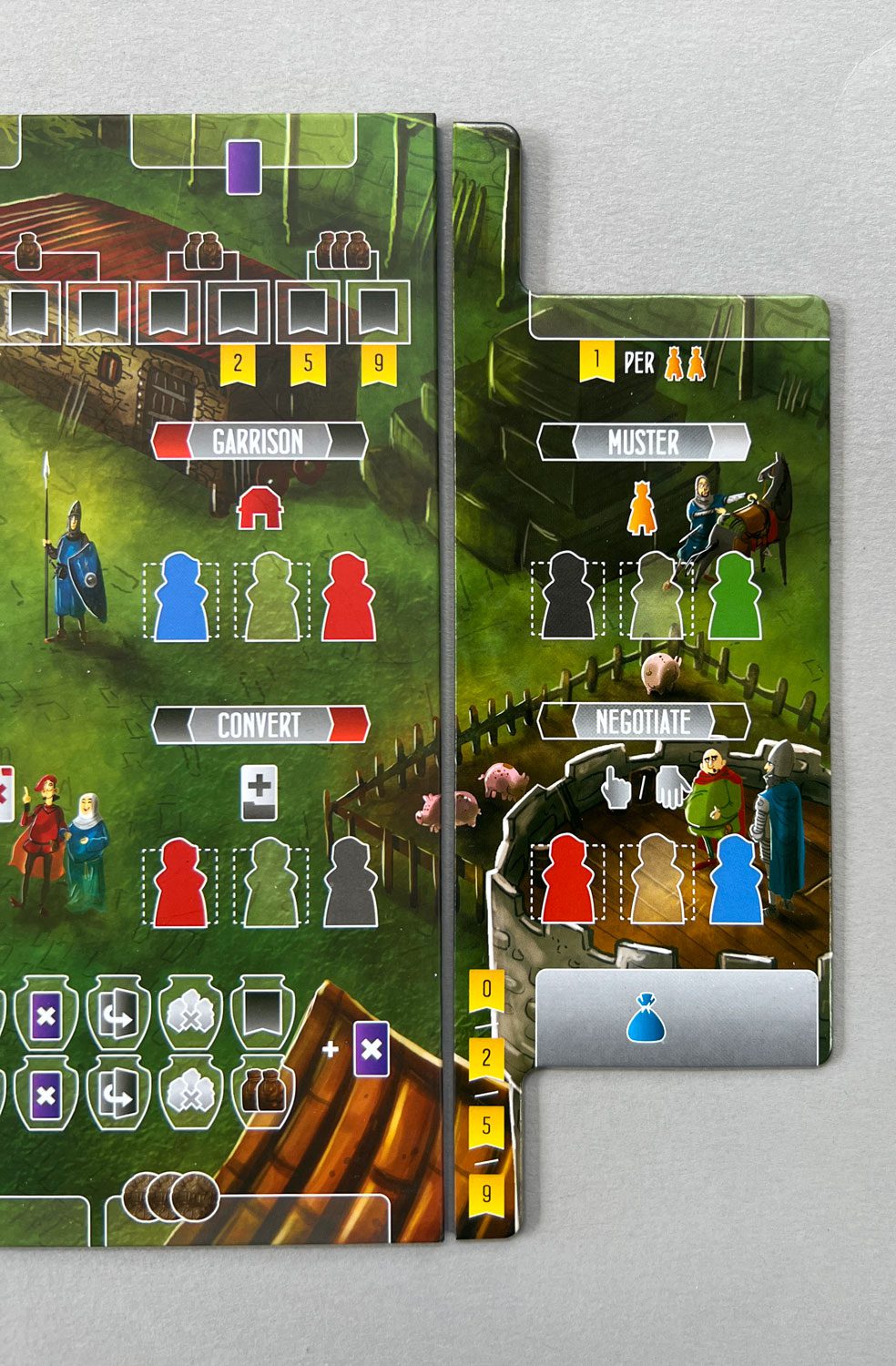
The bottom of that board extension is for the new Negotiate cards. Three of these are placed under the Muster cards, with the remainder of the deck placed face up in the left-most spot. (The two spaces to the right of it are occupied by one additional Townsfolk and the face-up remainder of the Townsfolk deck.)
Negotiate cards work the same way Townsfolk (and Outsider) cards. As Townsfolk can either be claimed and discarded immediately for their topmost resource/action or added to your crew for their ongoing benefits, Negotiate cards can as well. Taking the Entrust action allows you to take the topmost action for free. This allows you to take a placement action (Garrison, Commission, etc.) regardless as to the otherwise required attribute’s position on the scoring track. This Negotiate card is then discarded.
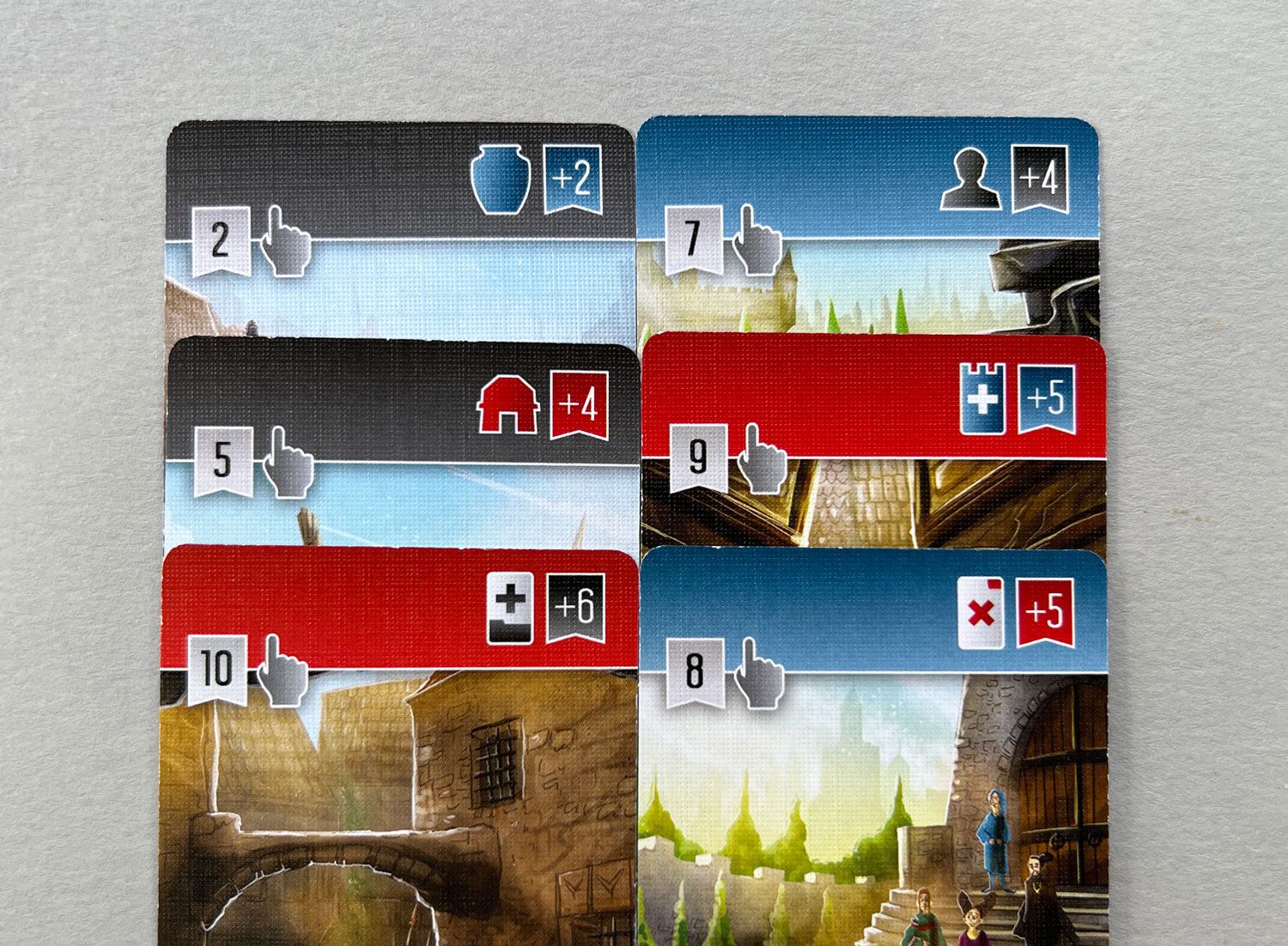
The Enlist action allows you to tuck the Negotiate card at the bottom of your personal player’s board extension.
At the bottom of your player board extension will be a pre-printed icon: either a blue sack, two crossed red swords, a gray cross, or a green sheaf of grain. For each separate set of four different icons you accumulate, you’ll score nine points. For each set of three, you’ll score five points. Pairs are worth two points. A single card can only be used once but, in a game where points can be hard to come by, these can quickly stack up.
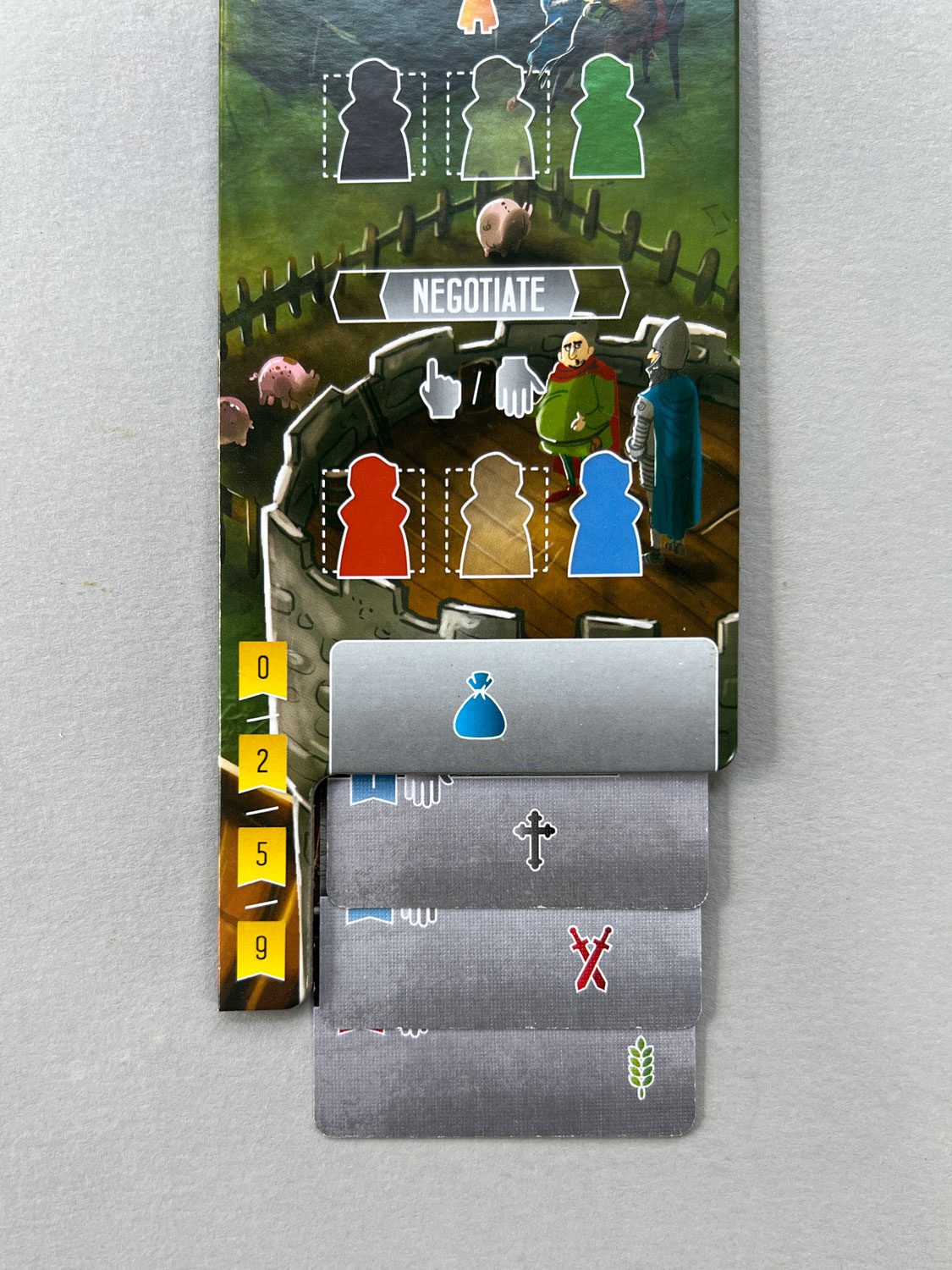
The third type of new cards are the four Ally cards. Whenever you collect three Negotiate cards with matching icons, you collect the associated Ally card. Each card will grant you a specific type of extra meeple at the start of each round.
You’re also given a fourth Attribute marker (gray, for Diplomacy) to move up the scoring track, and an extra Workshop that is placed before starting the game.
Thoughts
Although I was eager to play City of Crowns, getting it set up on our standard gaming table was a challenge. If you’ve played Paladins, you know how much of a table hog this game already is. Add the extension to the main playing area and it makes for a very crowded table. Just look at this example from the rule book.

Space considerations aside, City of Crowns adds more of the same to Paladins. And that’s where my issues with the expansion start.
Paladins is already a complex game. It’s another worker placement/resource management game where there’s never enough resources or rounds to do everything you want to do. This means you have to specialize, to some extent, focusing on only some of the right-side actions to ensure you’ll score some points from them. (Trying to focus on all of them will likely earn you no points from any of them)
Adding in an additional two right-side actions and a fourth Attribute has meant more things that I just can’t get to. It’s common for me to go heavy on two or three of the player board areas (say, Workshops, Garrisons, and Attacking) to score the points offered by the last three spaces for the area. However, there’s no way I’m going to be able to do those well and pay attention to the two new areas unless I drop one of the original areas.
From a points consideration, Enlisting is where your focus should be. The best defense against it is to start Enlisting as soon as someone else does. However, this forces me to play the game a certain way, instead of how I might otherwise choose to. (As I said in my review of Exoworld: Survival, I dislike having my gameplay dictated to me.)
With expansions, it’s a question of Is It Exceptional? For me, City of Crowns is not. As my gaming group discussed after our first play, “Do you really need to make an already complex game more complex?”
More importantly, will I continue to play with it? Probably not. The next time we play Paladins I’ll suggest extracting the City of Crowns elements and playing without them. There might be some minor grumbling, but I don’t think anyone will argue strongly for keeping it.



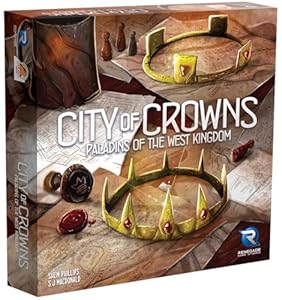




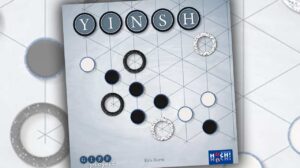




Add Comment